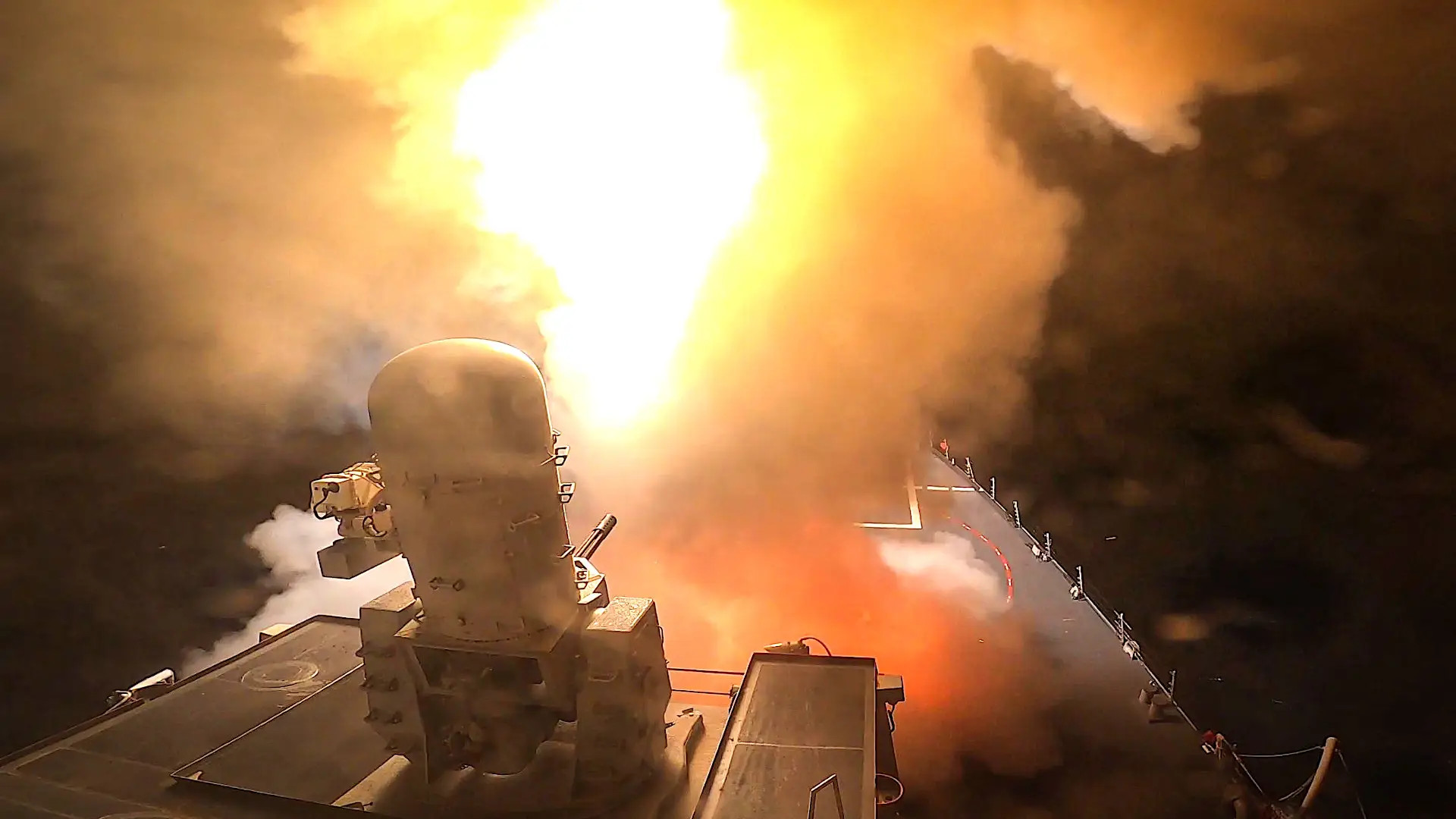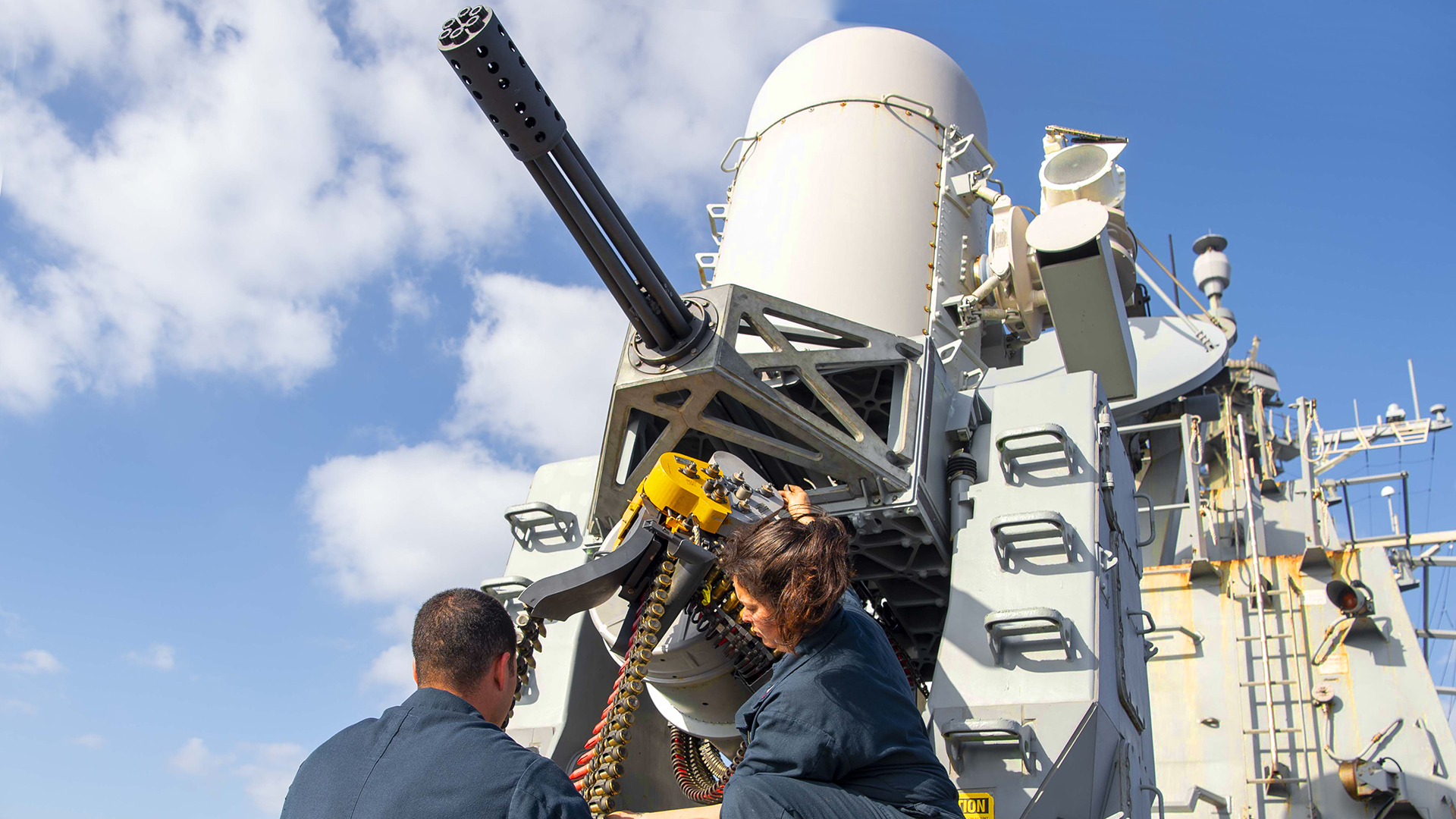After more than four decades in service, the Phalanx Close-In Weapon System, or CIWS, has become a well-known defensive feature on U.S. Navy and other allied warships, and has an unusual pop-culture following. Details about the specialized tungsten-cored ammunition it fires, or how much those rounds cost, are less common knowledge. A two-second burst from a Phalanx costs the Navy nearly $7,000, according to budget figures in the service’s 2025 Fiscal Year request.
The Navy, along with the rest of the Department of Defense, rolled out its proposed budget for the 2025 Fiscal Year on Monday. In it, the service is asking for just over $17 million to purchase 372,000 Mk 244 Mod 0 20mm cartridges. This breaks down to a per-round cost of $45.84. The Mk 244, also known as the Enhanced Lethality Cartridge (ELC), is currently the primary operational round used in Phalanx CIWSs on American warships.

Phalanx is a self-contained, turreted close-in defense system armed with a six-barrel M61 Vulcan cannon. The systems have their own search and track radars and electro-optical and infrared cameras for target acquisition and engagement, and can be used in manually operated or autonomous modes. The Phalanx’s M61 can be set to fire at one of two rates, 4,500 or 3,000 rounds per minute, for use against aerial targets such as cruise missiles and aircraft or “asymmetric threats” (which includes “littoral warfare threats” like small boats), respectively, according to the Navy.

At the higher rate of fire, a Phalanx spits out 150 20mm rounds in a typical two-second burst. The system’s magazine can hold up to 1,550 rounds, which equates to 20 seconds of total firing time at 4,500 rounds per minute. At 3,000 rounds per minute, the two-second burst rate is 100 rounds and the total firing time is 31 seconds.
Regardless of how fast those rounds are expended, fully loading a Phalanx’s magazine with Mk 244s costs just over $71,000.
The Mk 244, produced by General Dynamics Ordnance and Tactical Systems (GD-OTS), is a kinetic round, meaning that it is designed to destroy targets by physically smashing into them. The round contains a subcaliber tungsten projectile inside a discarding plastic sabot.

After firing, the sabot breaks away and the tungsten projectile continues onward. The discarding sabot design increases the velocity of the projectile, helping it close the distance to the target faster and increase the force of impact.

The “Enhanced Lethality” in ELC refers primarily to the projectile being 48 percent heavier than the one in the preceding Mk 149 round for the Phalanx CIWS, which “produces higher kinetic energy on target,” according to GD-OTS. The company also says the Mk 244 is more accurate, with its shot dispersion being 40 percent lower than the Mk 149 cartridge.

It’s worth pointing out here that the U.S. Army uses different 20mm ammunition in its Land-based Phalanx Weapon Systems. These are known as Centurions and are often referred to just as C-RAM (Counter-Rocket, Artillery, and Mortar) systems, which is their primary role. The current operational round for Centurion is the M940 multipurpose cartridge, which is a high-explosive incendiary type with a tungsten tip. The M940 is also designed to self-destruct after a period of flight if it doesn’t hit a target, which reduces potential hazards to friendly forces and innocent bystanders below. This also produces something of a fireworks show when these systems are fired as unexploded rounds detonated in mid-air.

Each M940, another GD-OTS product, currently has a price tag of $80.70, according to the Army’s Fiscal Year 2025 budget request. This means a two-second burst from a Centurion, at a rate of fire of 4,500 rounds per minute, would cost just over $12,100.

The 20mm rounds that M61 Vulcans in U.S. combat aircraft fire are generally less expensive than these more specialized cartridges. For example, the Air Force’s current standard PGU-28A/B semi-armor-piercing high-explosive incendiary cartridges cost around $34 apiece, per that service’s budget documents. This means that an F-15C’s full drum of 940 rounds costs roughly $32,000. An F-16 with 511 rounds would cost over $17,000 to top off.
The Navy’s Phalanx systems popped into the mainstream news cycle back in January, when it emerged that the Arleigh Burke class destroyer USS Gravely had reportedly used one to shoot down an incoming Houthi anti-ship cruise missile while sailing in the Red Sea. This raised concerns about the ability of the Iranian-backed militants to get a weapon so close to a U.S. warship. Phalanx is generally seen as a last-ditch line of defense as The War Zone highlighted at the time.
For months now, Iranian-backed Houthi militants have been launching anti-ship ballistic and cruise missiles, as well as drones, at commercial ships and foreign naval vessels in the region. U.S. and other international forces have shot down dozens of Houthi missiles and drones and have also launched strikes on the group’s assets inside Yemen. Just in the past two months, the Yemeni militants have fully demonstrated their willingness and ability to carry out fatal attacks on commercial ships and even sink them.

The cost of a full load of Mk 244 rounds for a Phalanx CIWS is exponentially less expensive than the multi-million dollar missiles U.S. Navy warships have been using to engage Houthi threats at longer ranges. All of this also pales in comparison to the potential cost in lives, as well as damage to multi-billion dollar ships, from not intercepting these threats.

Around the rollout of the Fiscal Year 2025 budget request this week, U.S. military officials spoke about how the crisis in the Red Sea has put a spotlight on the importance of layered defense in depth, especially for ships at sea.
“We are a learning organization. And so as we apply the concepts of defense in depth, it isn’t always an expensive SM-2 missile that gets shot at a UAS [uncrewed aerial system],” Navy Adm. Christopher Grady, vice chairman of the Joint Chiefs of Staff, said at a press conference on Monday. “We’ve learned how to use other systems and have rapidly adjusted to this concept of defense in depth. And that’s what gives me great confidence that we’ll be able to sustain that as long as it takes to change the calculus over there.”
Phalanx is an important part of that equation currently and would be in any other future conflicts that U.S. naval forces might find themselves involved in, including high-end ones that would feature a higher volume of incoming threats. In particular, the system is one of a limited number of defensive tools Navy ships have to deal with the very real threat posed by drones that get too close to their vessels. The service is actively looking to expand its counter-drone capabilities at sea. This will become far more critical as overwhelming drone swarms, which could easily overwhelm a system like Phalanx, become a more focused threat, as you can read more about here. Laser and high-power microwave-directed energy weapons could substantially decrease engagement costs, but they too have their limitations.
In addition, reloading Phalanx systems, which currently has to be done manually, and keeping ships stocked with ammunition for them, highlights broader operational and logistic challenges that are increasingly coming into focus. The War Zone recently explored these issues in detail in a feature you can find here.

Altogether, Phalanx, which costs thousands of dollars to fire every second, can still be viewed as a low-cost weapon and is set to continue being a critical part of the defensive mix for Navy warships for the foreseeable future.
Contact the author: joe@twz.com
